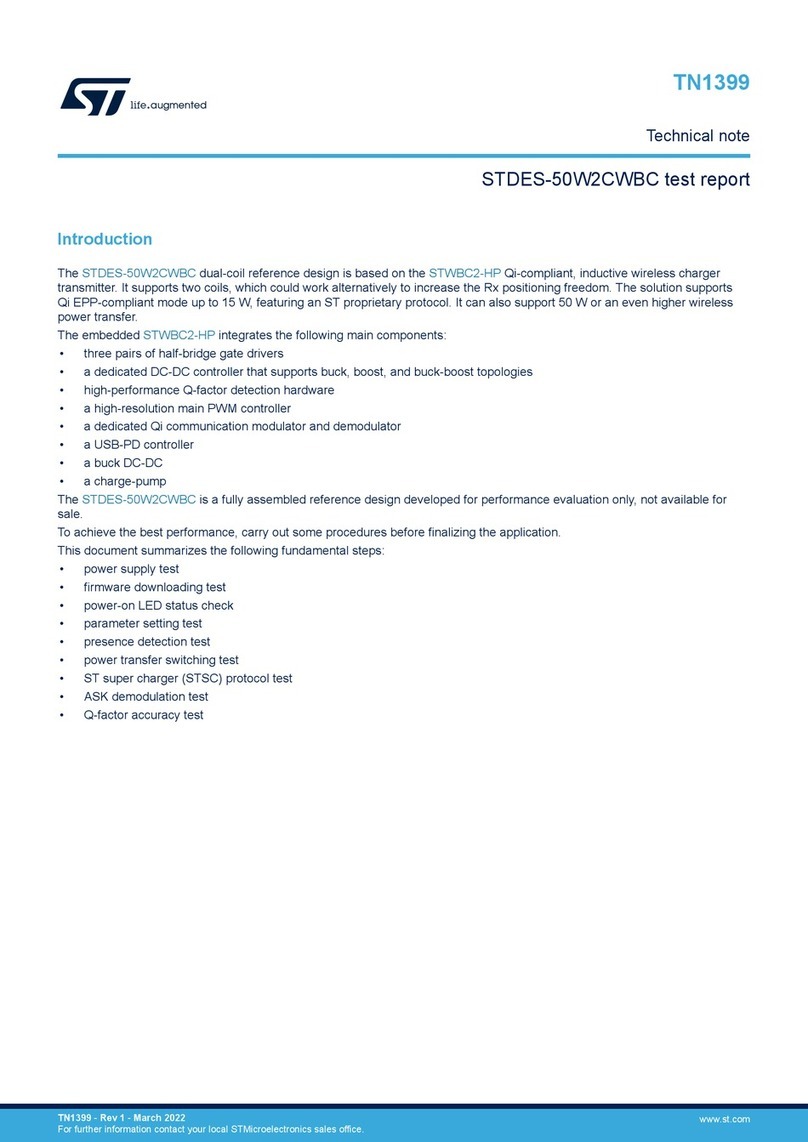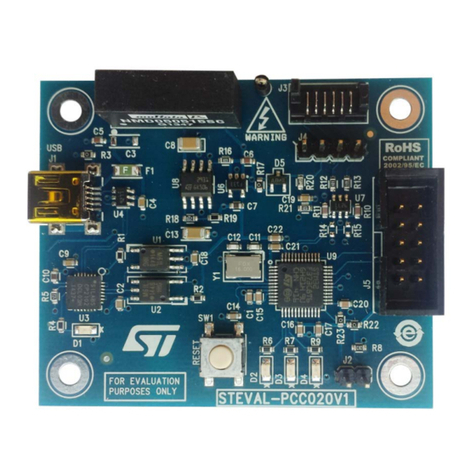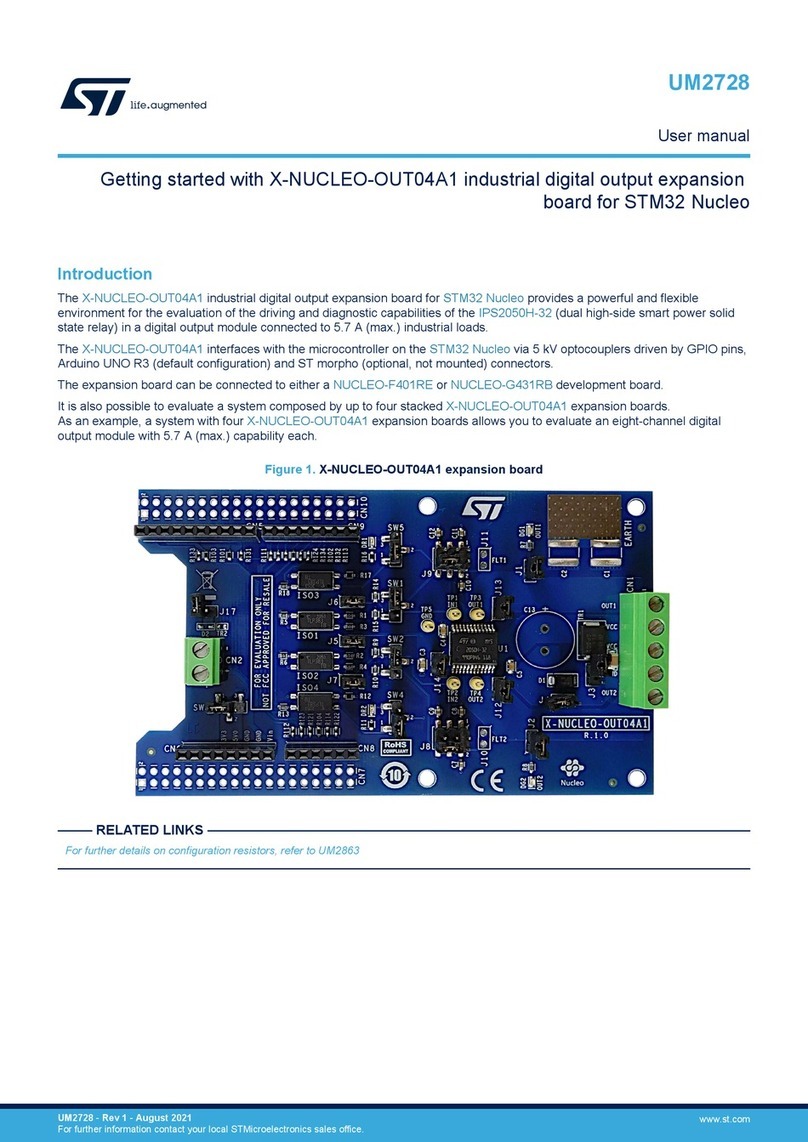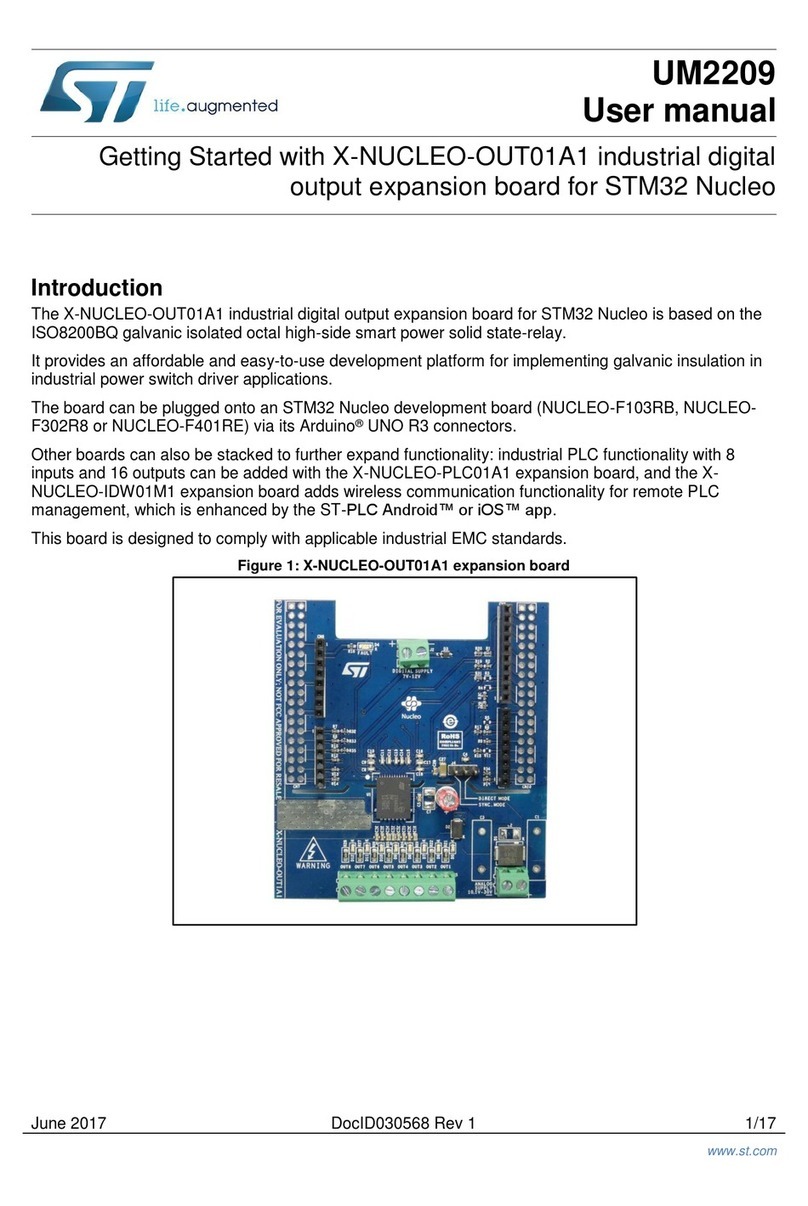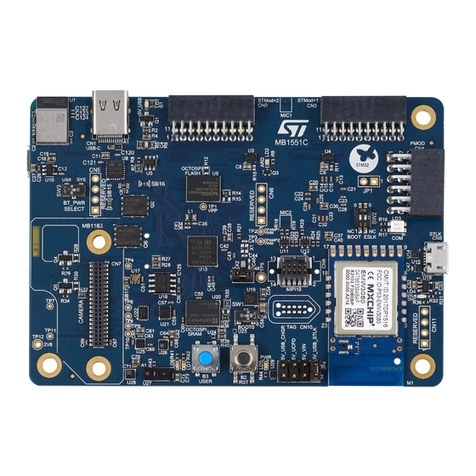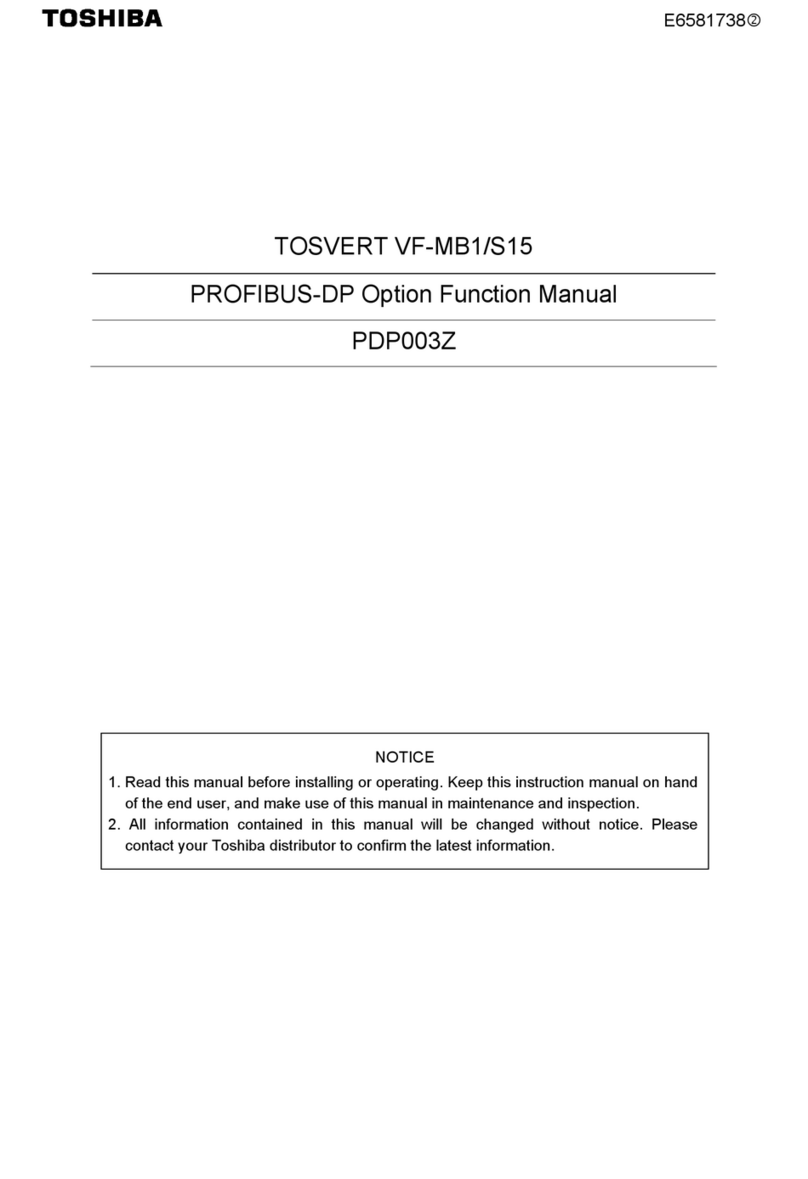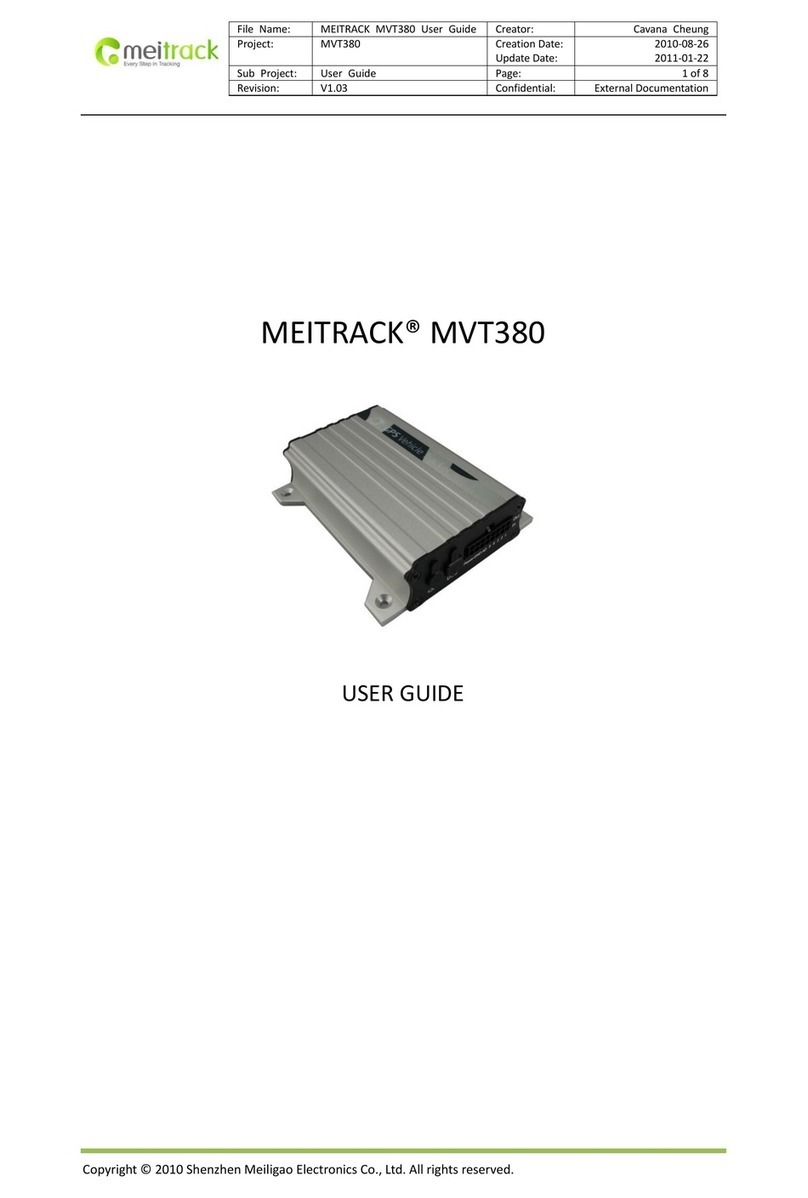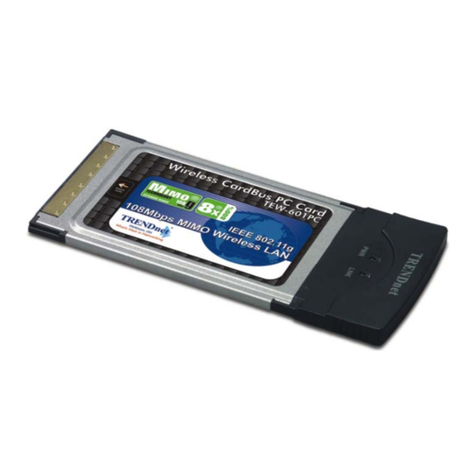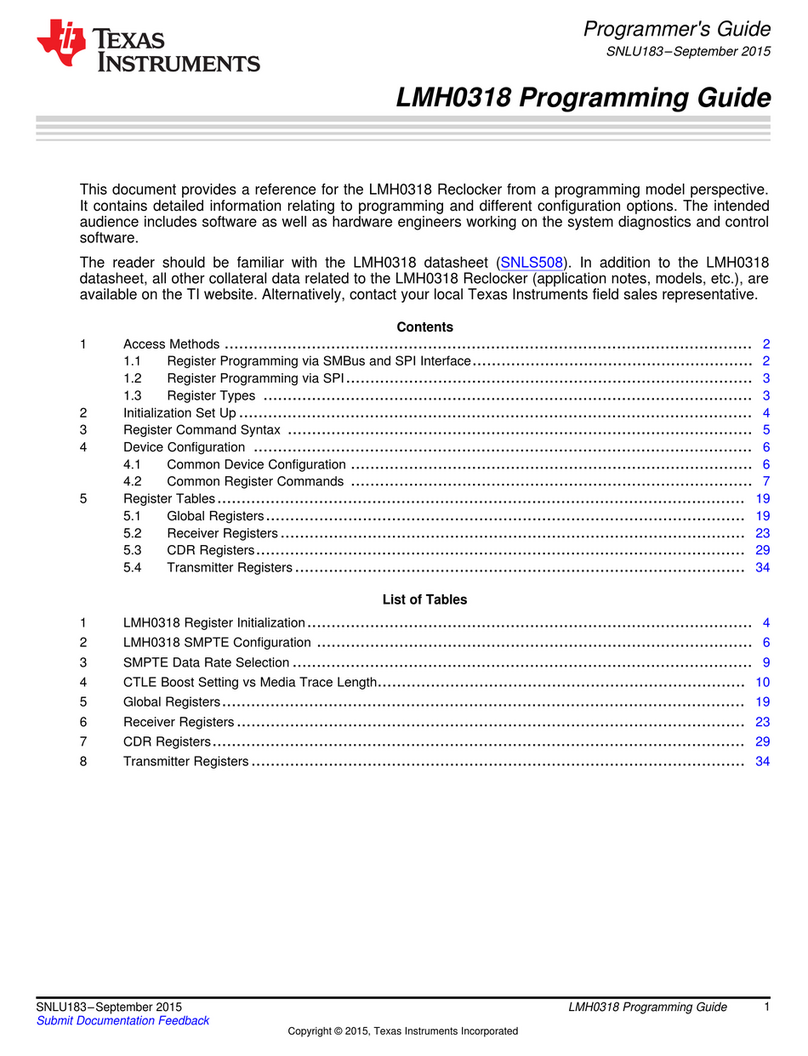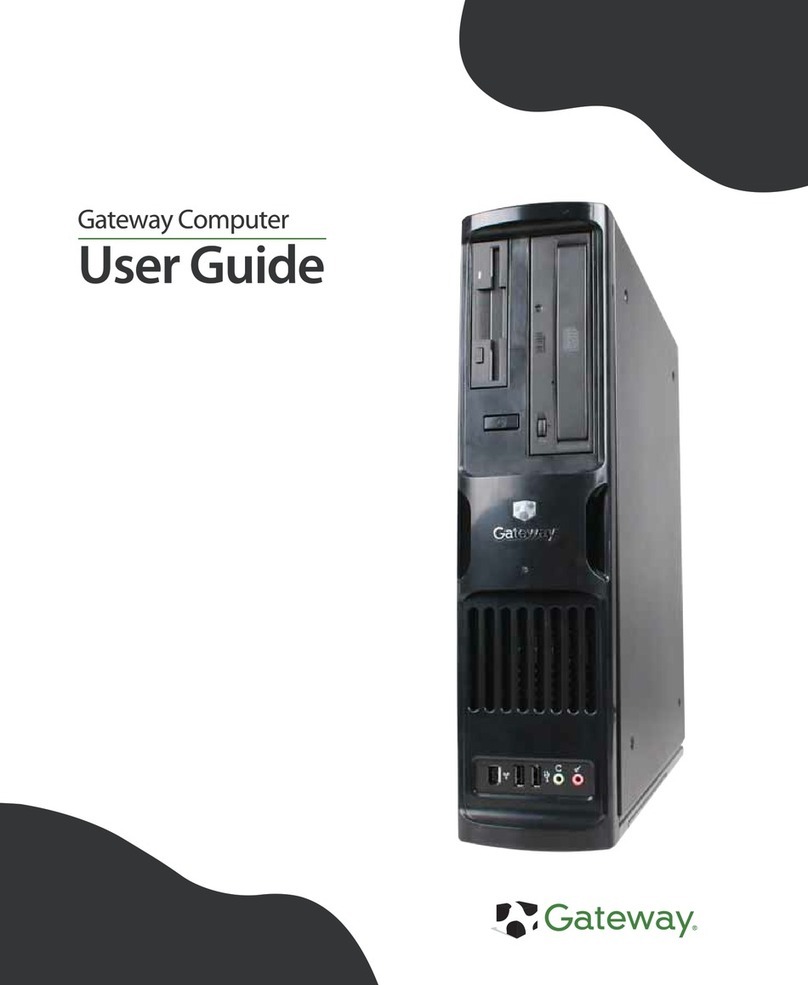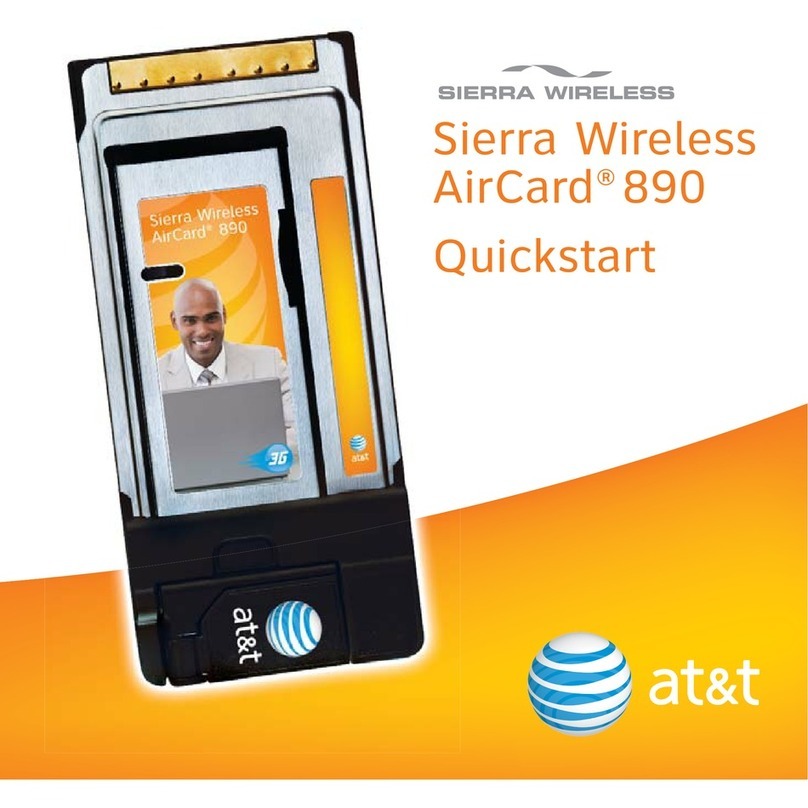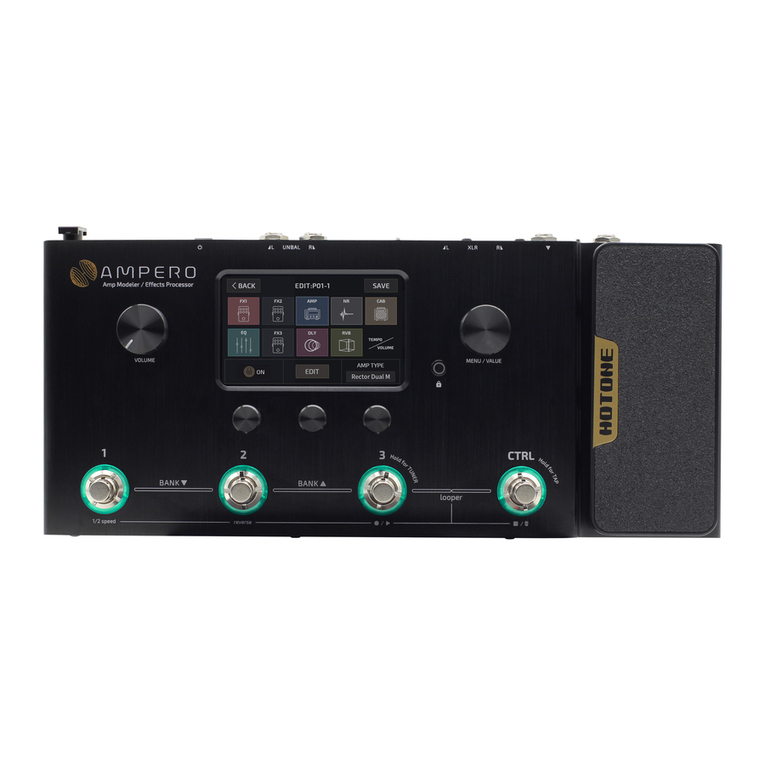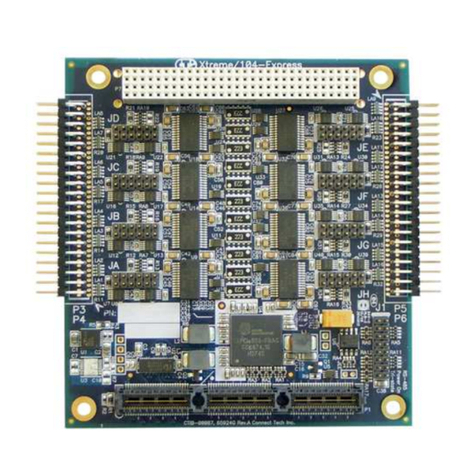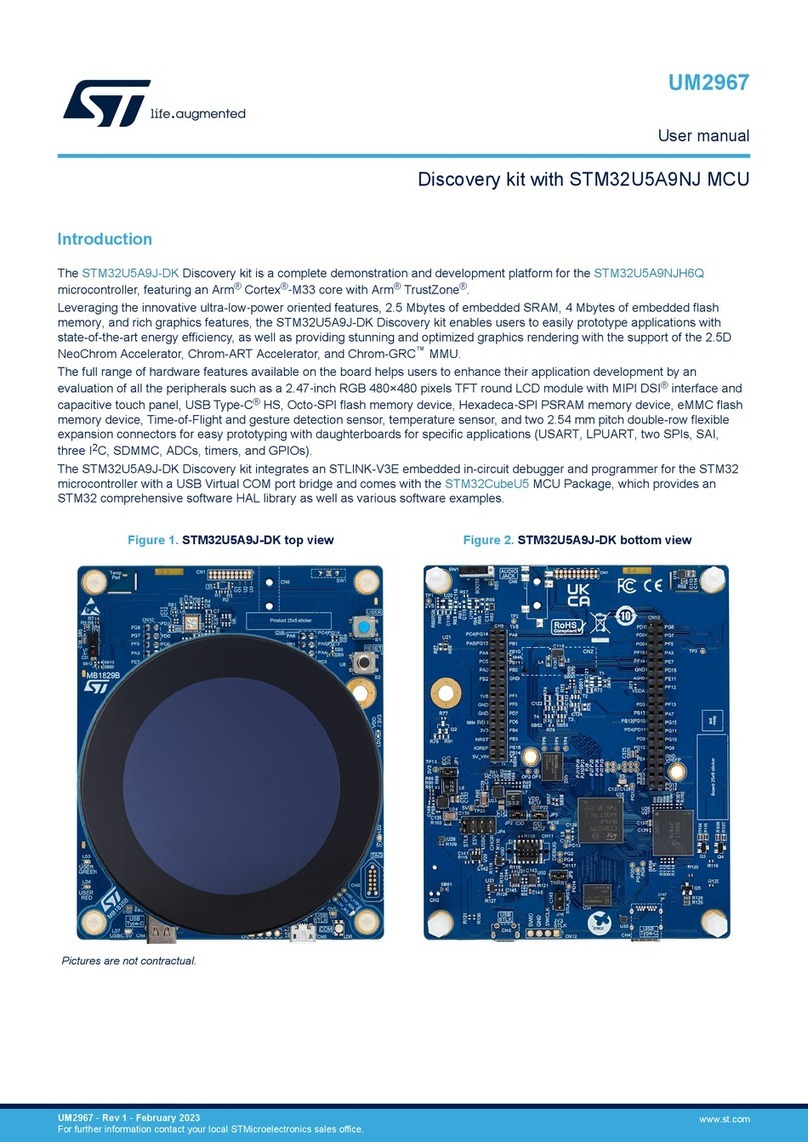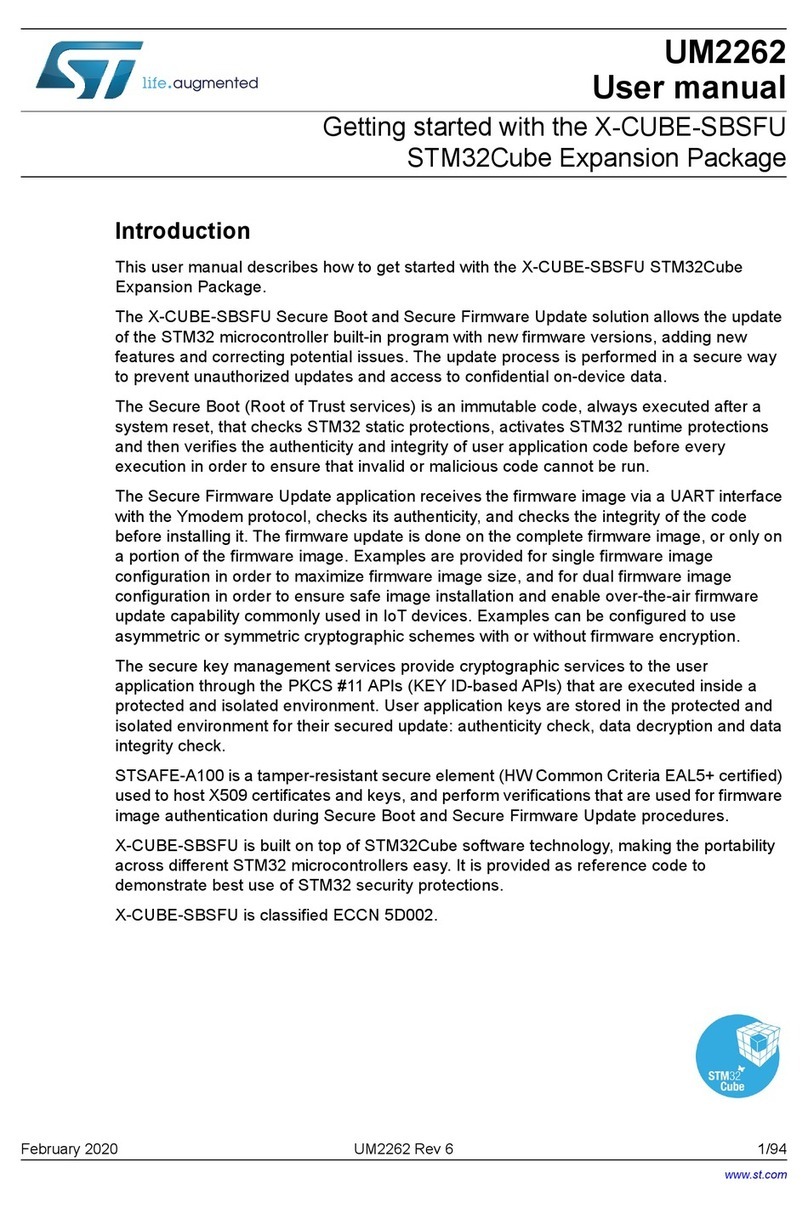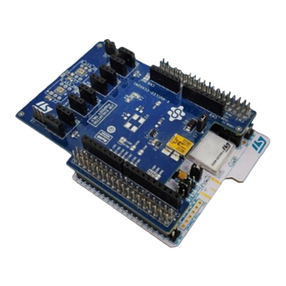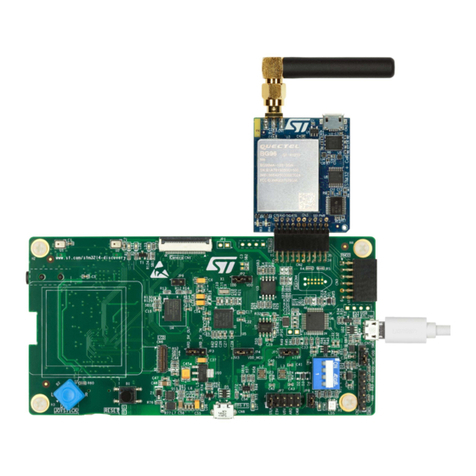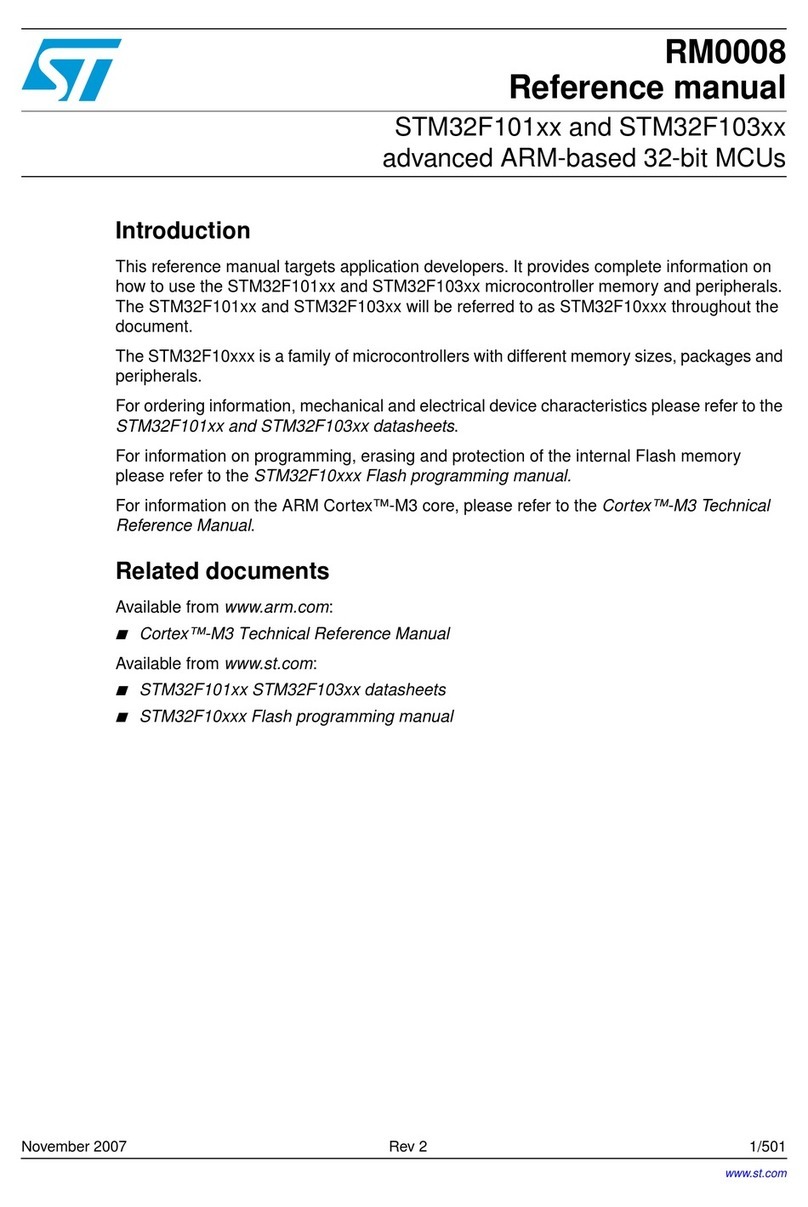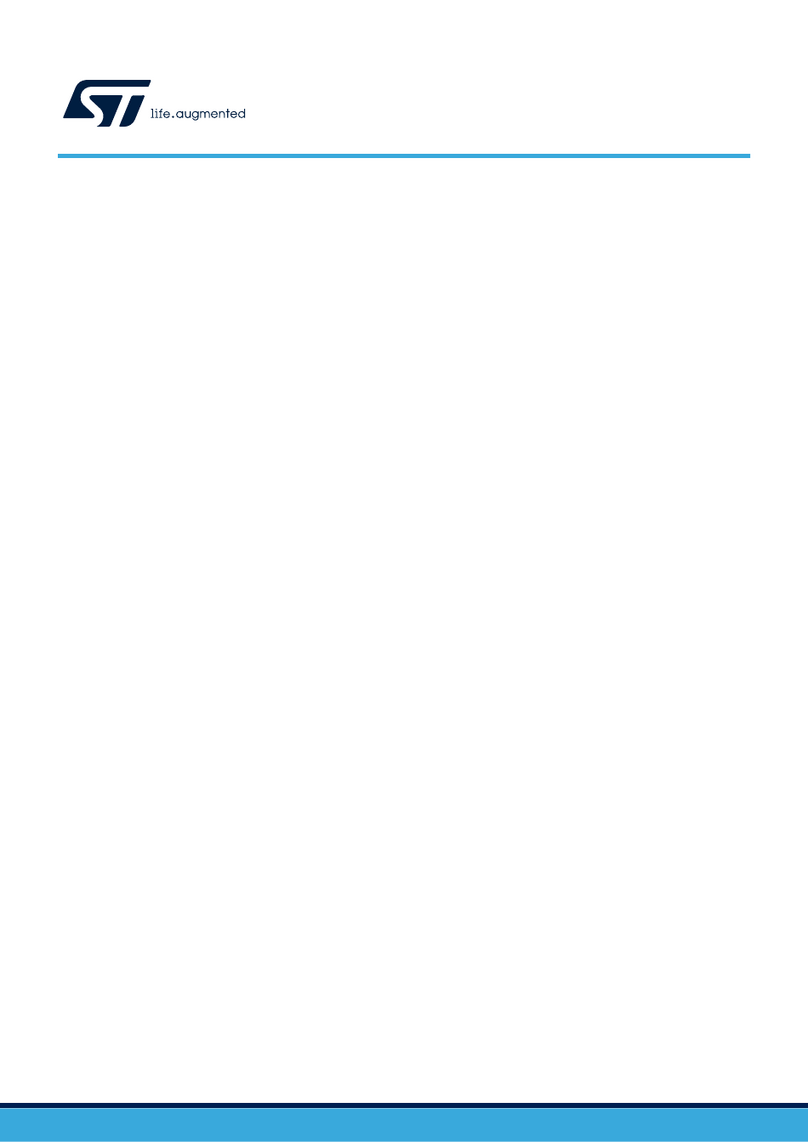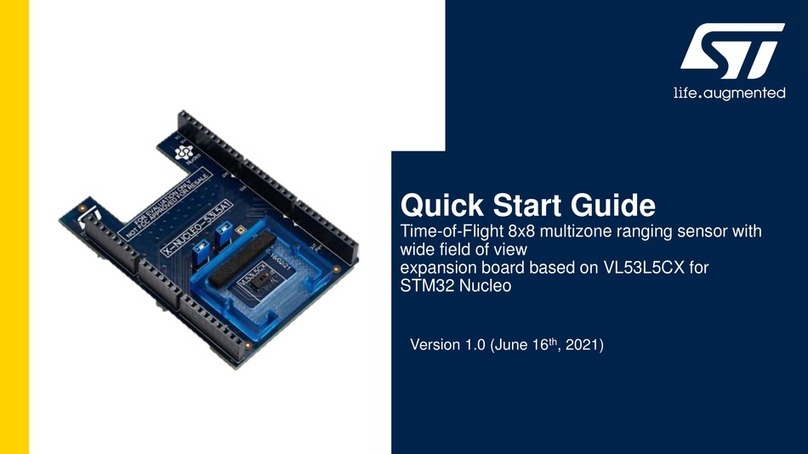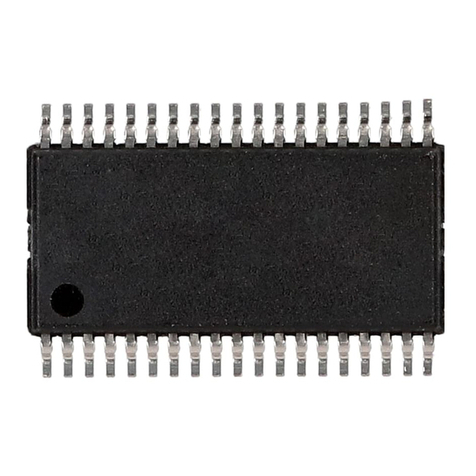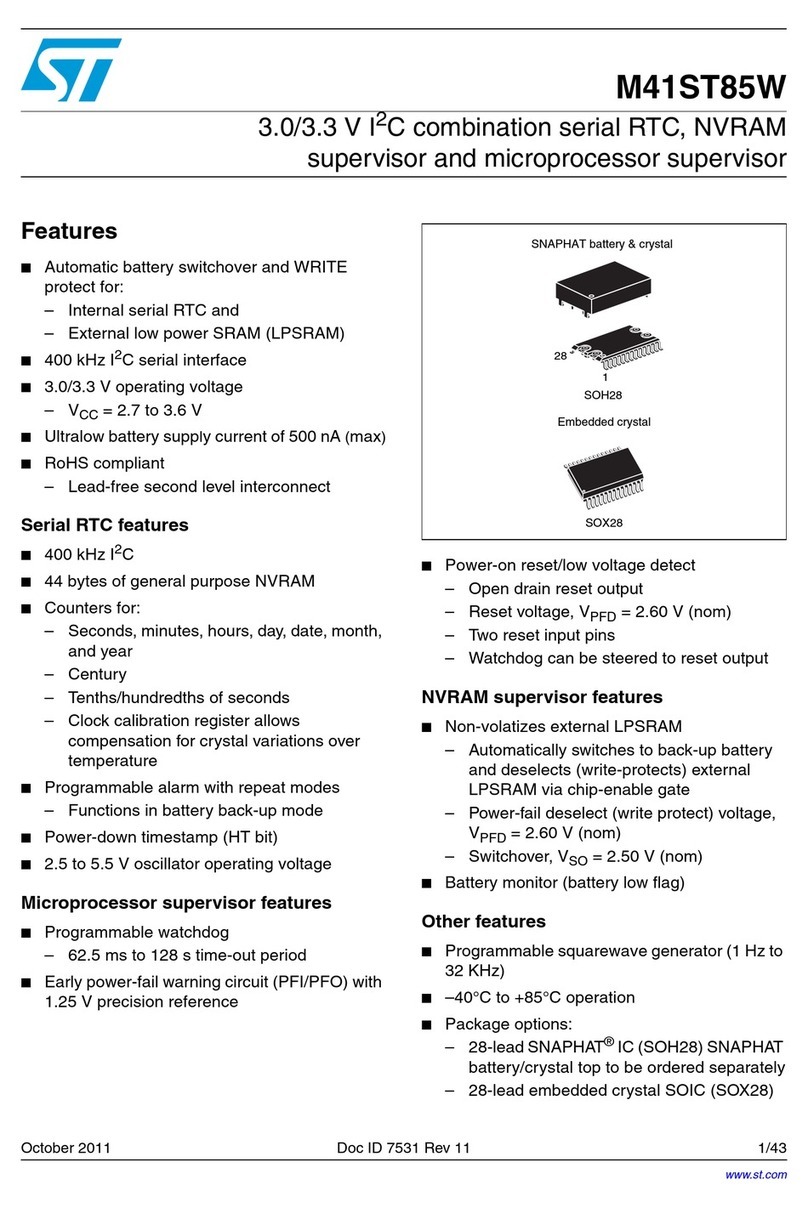
1.2.2 TCPP01-M12 USB Type-C® protection and VBUS overvoltage protection setup
TCPP01-M12 (U1) protects the CC1 and CC2 pins of the USB Type-C® and PD controller sink against
overvoltage in case a short-circuit event with the VBUS occurs during the attach or detach operation with a
defective tool.
The protection is implemented by removing the USB Type-C® cable from its receptacle.
Figure 5. TCPP01-M12 protection (U1) driving the STL11N3LLH6 MOS (Q1)
Connector
side
DB/
CC1
CC2
CC1c
CC2c
VCC
FLT
VBUS
VCC
GND
GND
GND
SH1 0 N.M.
D2
R3
10k
SH5
0 N.M.
U1
TCPP01_M12
6
VBUS_CTRL
3CC1 7
CC1c
1CC2 9
CC2c
DB/
10 FLT/ 11
GND
2
GND1
13
4
SOURCE
5
GATE
8
IN_GD
VCC
12
C3
R1_22V 620
SH3 0 N.M.
Q1
6
4
2
STL11N3LLH6
1
35
7
8
10k
CC1
CC2
CC1c
CC2c
VBUS
DB/
VBUSc
VBUS_CTRL
VBUS_CTRL
Controller
side
0 N.M.
0
R1_6V 2.7k
R1_10V 1.5k
R1_13V 1.1k
R1_17V 820
BAT54K
100n
R2
TCPP01-M12 overvoltage protection (OVP) threshold setup mechanism is based on a resistive network
composed of five resistors (R1_6V, R1_10V, R1_13V, R1_17V and R1_22V) and five solder bridges (SH1, SH2,
SH3, SH4, and the SH5). Connected to the device through the BAT54K signal Schottky diode (D2), this section is
shown in the figure above (left side) and is placed at the board bottom.
On the X-NUCLEO-SNK1M1 expansion board, the 22 V OVP threshold is set by default via SH5. To change the
threshold to another value (6, 10, 13 or 17 V), remove SH5 and add a different solder bridge on the selected OVP
voltage.
When a defective power source plugged onto the Type-C connector produces a voltage higher than the selected
OVP threshold, the TCPP01-M12 OVP mechanism controls the external MOSFET Q1 and interrupts the VBUS
line.
The current X-NUCLEO-SNK1M1 setup is compliant with the USB Type-C® and Power Delivery specifications. It
is certified by USB-IF, with TID certification no. 5205.
However, some USB Type-C® adapters and equipment, which are not compliant with the specification, might
latch the solution to overvoltage when connected to it. This is due to the generation of an initial spike that is very
close to the OVP upper limit.
In such occurrences, we suggest replacing the resistance values according to the values reported in the table
below, in the “Recommended resistor” column.
Table 1. Resistor values
VBUS max Pmax Resistor reference Onboard values (mounted) Recommended values for noncompliant
adapters
6 V 15 W R1_6V 2.7 k 2.4 k
10 V 27 W R1_10V 1.5 k 1.27 k
13 V 36 W R1_13V 1.1 k 910 k
17 V 45 W R1_17V 820 k 715 k
22 V 100 W R1_22V 620 k 536 k
This new set of resistors still filters against voltage spike at startup, but do not latch the OVP.
UM2773
Hardware architecture
UM2773 - Rev 6 page 5/23


